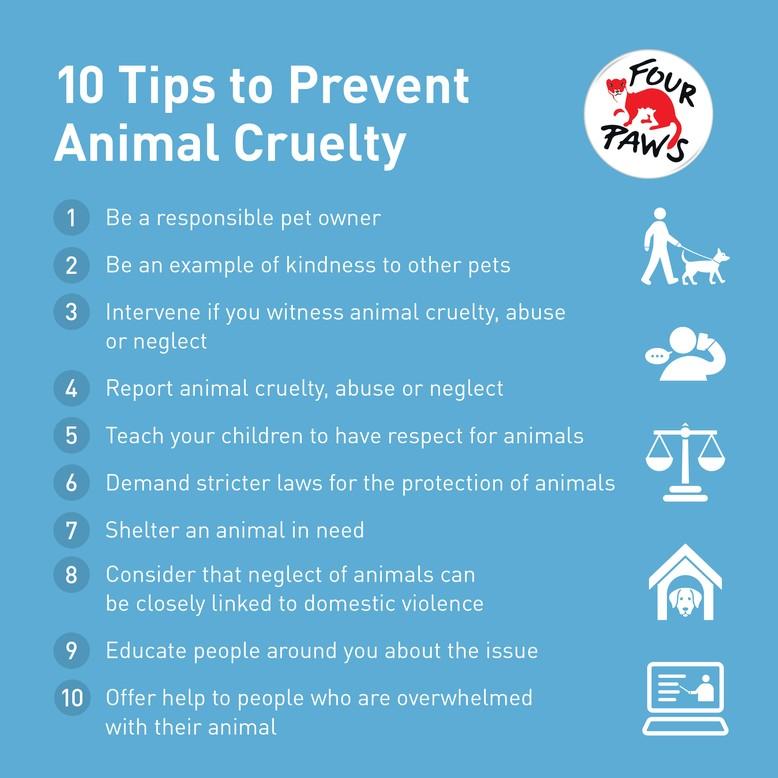Animal cruelty is an insidious plague that transcends geography and economic strata, manifesting in various forms — from blatant abuse to neglecting basic needs. Advocates in the realm of animal rights face an immense challenge: how to prevent cruelty effectively. This guide illuminates the essential do’s and don’ts for those committed to rendering a tangible difference in the lives of animals.
First and foremost, the cornerstone of any advocacy effort is education. Understanding animal welfare laws, species-specific requirements, and local resources is paramount. Knowledge fuels action, creating a well-informed advocate who can articulate issues and solutions. By familiarizing oneself with animal rights literature and the history of animal welfare organizations, advocates can set a strong foundation for their efforts.
One of the most potent do’s involves fostering community engagement. Building a network of like-minded individuals can amplify voices. Organizing workshops, community clean-ups, or informational sessions fosters a sense of belonging while generating momentum for animal welfare initiatives. Advocates should reach out to schools, local governments, and businesses to promote awareness and drive collaborative efforts. After all, collective action elevates the cause and invites broader societal involvement.
Equally important is the do of adopting a compassionate approach. When discussing animal cruelty, emotions run high, and advocates must navigate these sentiments with care. Utilizing empathetic language and emphasizing the emotional and psychological impacts of cruelty can captivate an audience’s attention. This approach may prompt individuals to reevaluate their actions and attitudes toward animals, facilitating a profound shift in perspective.
On the flip side, advocates must beware of a few detrimental practices. A common mistake is employing sensationalism in efforts to raise awareness. While shocking imagery can evoke immediate responses, it oftentimes leads to desensitization or backlash. The objective is not only to illuminate cruelty but to cultivate long-lasting change. Therefore, narratives should be grounded in factual accuracy and composed with sensitivity. Let the stories of cruelty serve to inspire constructive action rather than momentary shock.
Additionally, loneliness can be a common pitfall. Advocates should not go at it alone, assuming that solitary advocacy is sufficient. Strength comes from collaboration, and joining forces with others — whether organizations or informal groups — can vastly enhance impact. Sharing resources amplifies outreach and effectiveness, allowing for more diversified strategies toward a common goal.
Moreover, don’t underestimate the power of legislative advocacy. Engaging with lawmakers and understanding key legislative measures that affect animal welfare can lead to systemic change. Advocates should strive to be informed about existing laws and proposed measures in their jurisdiction. Attending town hall meetings, lobbying for animal-friendly legislation, or even participating in advocacy days can create a ripple effect, influencing policy decisions that protect vulnerable animals.
It’s also crucial to address the broader systemic issues concerning animal welfare. Understanding the economic and social structures that enable cruelty can enhance the advocacy narrative. Factors such as poverty, lack of access to veterinary care, and cultural attitudes towards animals significantly impact how animals are treated. Advocates should create programs that target these root causes, educating the public and offering resources that address the overarching systemic inequalities in animal welfare.
In the quest to prevent animal cruelty, the importance of self-care should not be overlooked. Advocates often immerse themselves deeply in their work, which can lead to burnout. Engaging in self-care practices can ensure that advocates remain passion-driven and effective. Regular breaks, connecting back to personal motivations, and seeking support from fellow advocates can rejuvenate one’s spirit, fortifying them for the long haul.
Finally, the do of striving for transparency cannot be understated. Advocates must maintain integrity in their methods and communications. Transparency builds trust among stakeholders, whether they be individuals, businesses, or organizations. By keeping lines of communication open, advocates can foster a culture of accountability and mutual respect. This approach encourages more open dialogues and greater community investment in animal welfare initiatives.
In conclusion, preventing animal cruelty is a multifaceted endeavor that requires a balanced approach, combining knowledge, community engagement, compassionate communication, and systemic advocacy. While the path is fraught with challenges, the outlined do’s and don’ts equip advocates with a framework to navigate the complexities of this vital cause. By championing education, fostering collaboration, and advocating transparently, advocates can incite the change needed to create a world where animals are treated with the respect and compassion they rightfully deserve. Together, we can shift perspectives and foster a culture of empathy that curtails cruelty, ensuring a brighter future for all sentient beings.







